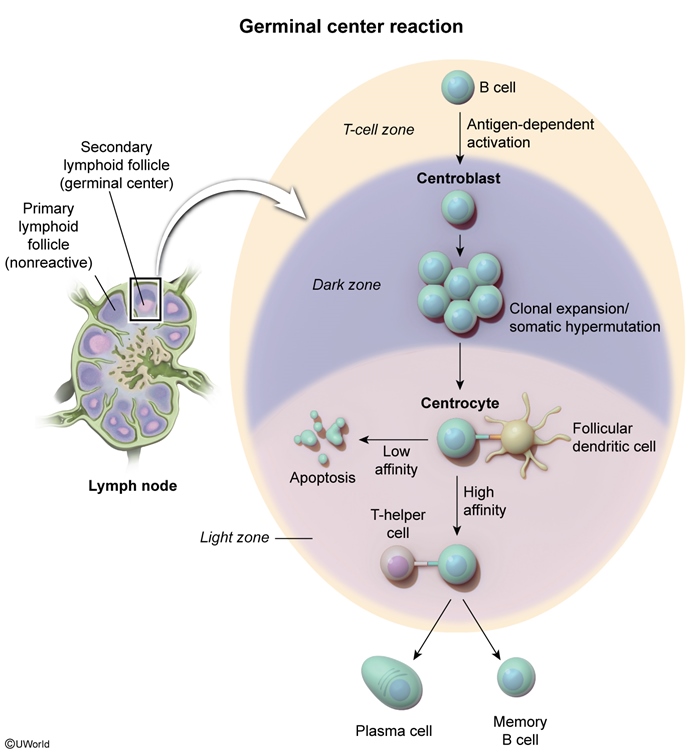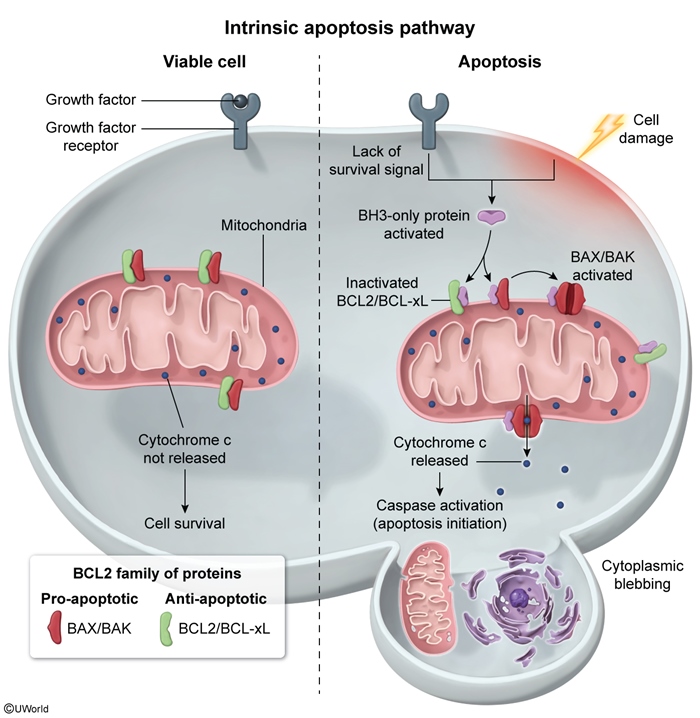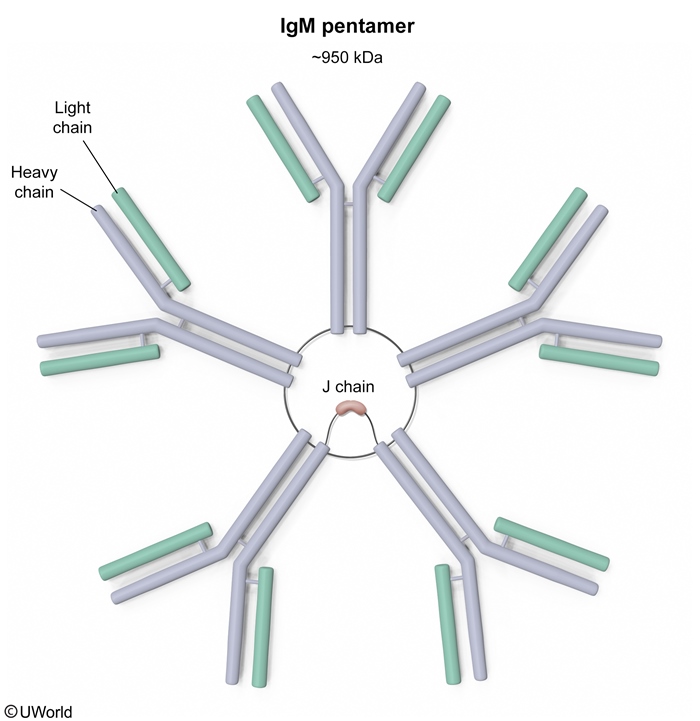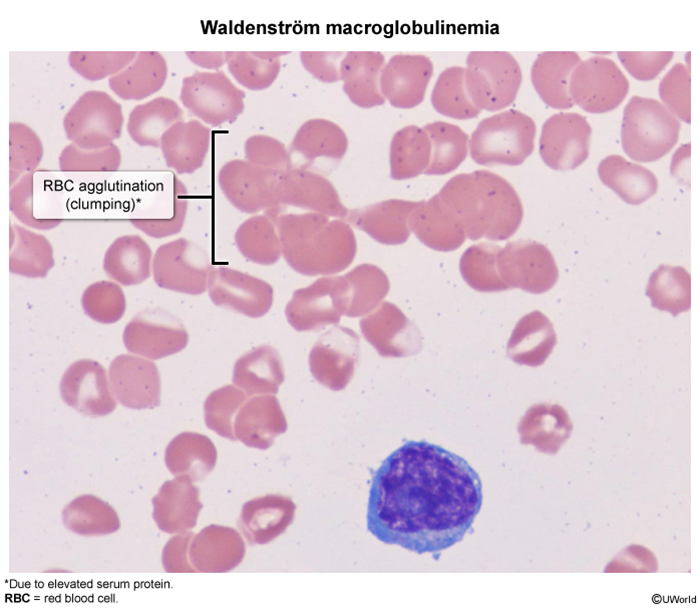Waldenström Macroglobulinemia
Article Sections
Introduction
Waldenström macroglobulinemia is a rare, mature B-cell malignancy characterized by the production of excess monoclonal IgM antibodies. As a result, high serum concentrations of IgM and malignant cell infiltration can lead to a variety of systemic symptoms.
Pathogenesis and risk factors
In response to antigen stimulation, B cells in lymph node germinal centers normally undergo somatic hypermutation and class switching (Figure 1). B cells that fail to produce high-affinity antibodies typically undergo apoptosis (Figure 2). Although this process is essential for effective humoral response, it is prone to errors and susceptible to genetic mutations that can lead to malignancy. The pathogenesis likely involves genetic mutations (eg, somatic mutation in MYD88 gene, resulting in constant activation of nuclear factor-kappa B [NF-kB], a transcription factor that promotes B-cell growth) leading to the clonal expansion of post–germinal center IgM B cells that have not yet undergone class switching.
Continue Learning with UWorld
Get the full Waldenström Macroglobulinemia article plus rich visuals, real-world cases, and in-depth insights from medical experts, all available through the UWorld Medical Library.
Figures



Images
